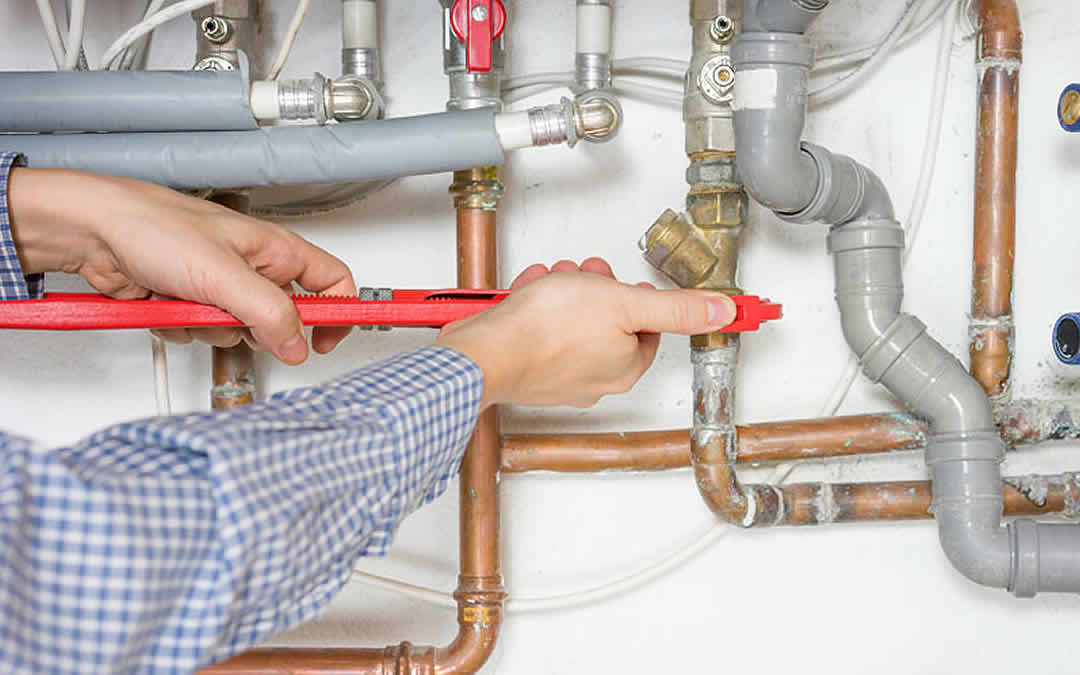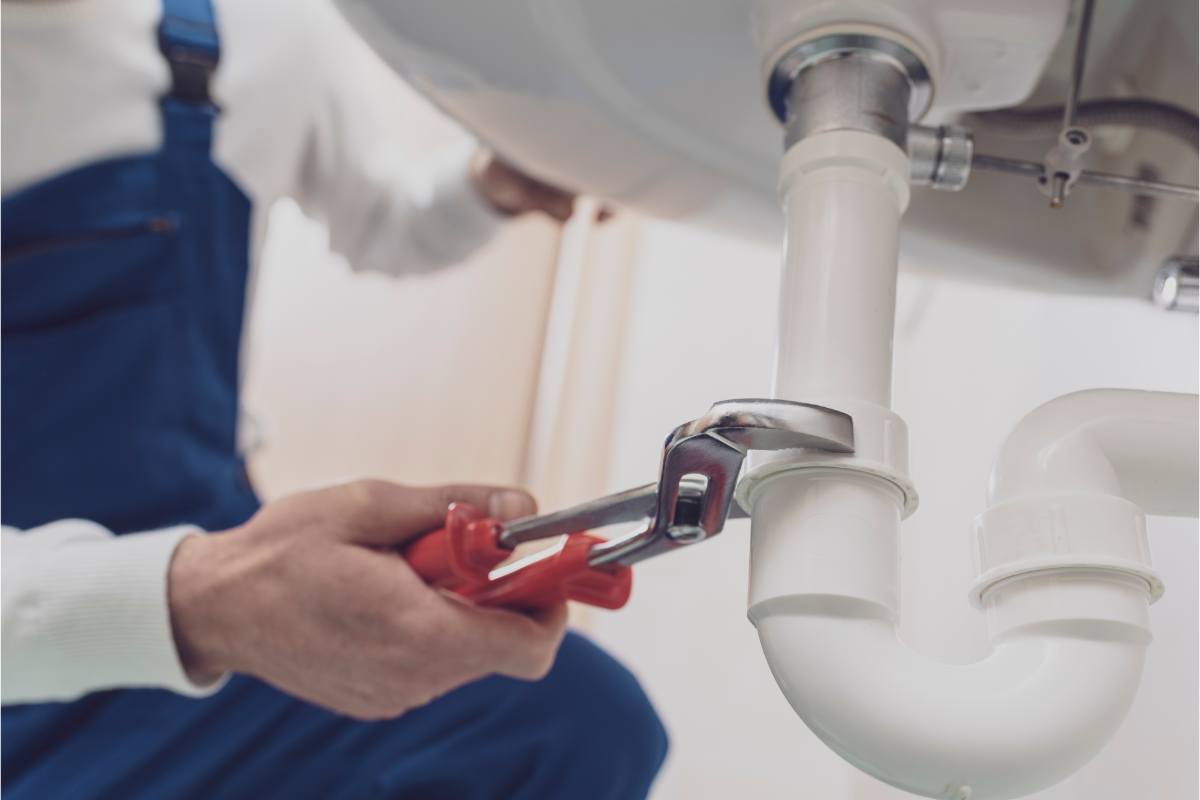This post which follows about Plumbing basics: How your home plumbing works is seriously motivating. Check it out yourself and decide what you think about it.

Plumbing is a crucial element of any home, responsible for providing clean water for alcohol consumption, cooking, and bathing, in addition to getting rid of wastewater safely. Recognizing the basics of home plumbing is necessary for each home owner to make sure proper maintenance, troubleshooting, and, if essential, repair work. In this beginner's overview, we'll cover the essential principles of home plumbing to aid you end up being more aware of exactly how it functions.
Water Heating Unit
The water heating unit is responsible for heating water for domestic use, consisting of bathing, cooking, and cleansing. Typical sorts of water heaters consist of tank-type water heaters, tankless (on-demand) hot water heater, and heat pump hot water heater. The water heater is attached to the water system system and delivers hot water to plumbing components as required.
Water drainage System
The drain system eliminates wastewater from your home and carries it away to a sewage therapy center or septic tank. It contains a network of pipes, fittings, and fixtures that carry wastewater from plumbing components to the primary drain line or sewage-disposal tank. Appropriate water drainage is vital to protect against obstructions, back-ups, and sewer leaks.
Ventilation System
The ventilation system helps maintain proper atmospheric pressure and stop drain gases from entering your home. Vent pipes, also known as air vent heaps, prolong from plumbing fixtures to the roofing system, allowing sewage system gases to get away safely outside. Air flow pipelines likewise allow air to enter the water drainage system, assisting in smooth wastewater flow and protecting against suction or vacuum cleaner impacts.
Supply Of Water System
The water supply system brings tidy water right into your home from a local water source or an exclusive well. It contains a major water line that links to your home's plumbing system, typically located underground. A water meter measures the amount of water eaten, while a shut-off shutoff permits you to manage the flow of water right into your home.
Plumbing Components
Plumbing fixtures are devices that deliver water to numerous parts of your home and include sinks, taps, toilets, showers, bath tubs, and appliances such as dish washers and cleaning devices. Each fixture is attached to the water system system by means of pipelines and fittings and might have its shut-off valve for maintenance or emergency situations.
Typical Plumbing Devices
Having the right tools accessible is necessary for carrying out standard plumbing repair work and upkeep tasks. Typical plumbing devices include flexible wrenches, monkey wrench, pliers, pipe cutters, hacksaws, plungers, augers (or drainpipe serpents), and Teflon tape. Having these tools conveniently available can assist you take on minor plumbing problems effectively.
Basic Plumbing Repair Work
While some plumbing fixings may need specialist assistance, numerous usual issues can be attended to with fundamental do it yourself strategies. Learning exactly how to take care of a leaky faucet, unclog a drainpipe, change a commode flapper, or fix a trickling showerhead can conserve you time and money on plumbing repair services.
Verdict
Understanding the basics of home plumbing is vital for every single home owner to keep a safe, functional, and efficient plumbing system. By familiarizing yourself with the supply of water system, plumbing components, drain system, air flow system, common plumbing devices, and basic repairs, you can confidently deal with minor plumbing issues and guarantee your home's plumbing system runs efficiently.
Understanding Basics of Home Plumbing System: A Beginner's Guide
The Main Components of Your Home Plumbing System
The Water Supply System
This system is responsible for transporting fresh water into your home. It usually has a main water line that splits into two branches: one directed towards cold water services and the other connected to a water heater for hot water. The pressure is key here; it ensures water reaches all parts of your house.
The Drainage System
Once water has been used, it becomes wastewater that needs to be removed from your home. This is where the drainage system comes into play. It includes all the pipes that carry wastewater and sewage away from your house to sewage treatment facilities or septic tanks.
The Vent System
The vent system prevents sewer gases from entering your home and helps maintain the pressure balance that allows wastewater to flow out properly. These vents usually exit through the roof of your house.
Water Heating System
For those who enjoy hot showers or using hot water for cleaning, the water heater is a crucial part of the plumbing system. It can be a tankless system, which heats water on demand, or a traditional water tank model.
Common Plumbing Problems and Basic Troubleshooting
Plumbing systems, while designed to be durable, can face issues like clogged drains, leaky faucets, or low water pressure. Here are some basic troubleshooting tips:
Clogged Drains
Use a plunger or a plumber's snake to try and dislodge whatever is blocking the drain. Regular cleaning can prevent clogs.
Leaky Faucets
Often caused by worn-out washers or gaskets, these can usually be replaced by someone with basic DIY skills.
Low Water Pressure
This might be due to sediment build-up in your fixtures or a leak somewhere in your water line. Cleaning out aerators or seeking a professional to detect leaks might be necessary.
Preventive Maintenance Tips
Maintaining your plumbing system is key to avoiding emergencies. Regularly check for leaks, avoid disposing of grease down the sink, and have your system inspected by a professional plumber at least once a year.

I discovered that post about Understanding the Basics of Your Home's Plumbing System while surfing around the web. Sharing is nice. You just don't know, you could be helping someone out. Thanks a lot for going through it.
Automated Marketing
Comments on “Diving into Home Plumbing Basics: A Beginner's Tutorial”